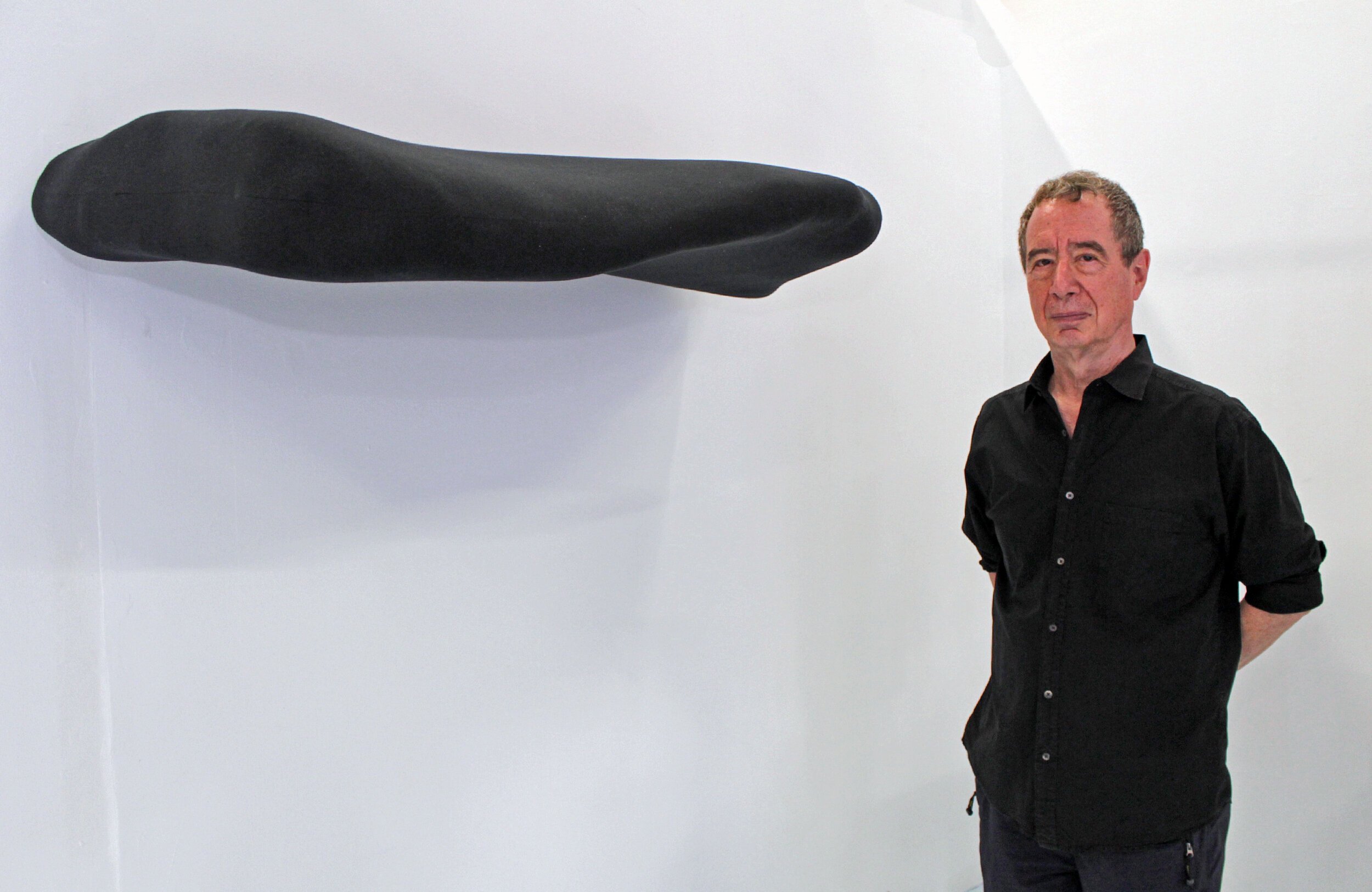Michael Gitlin
Photograph Source
From ABNY Gallery
Michael Gitlin's family emigrated from South Africa to Israel in 1948. Gitlin received his BA in English Literature and Art History from the Hebrew University of Jerusalem (1967). He simultaneously studied at the Bezalel Academy of Arts and Design in Jerusalem, graduating in 1967. Gitlin moved to New York City in 1970 and received an MFA from Pratt Institute (1972). His first museum show was at the Israel Museum in Jerusalem in 1977. That same year, his work was exhibited at the Documenta in Kassel, Germany. Gitlin was represented by the Schmela Gallery in Düsseldorf and works of his were acquired by such institutions as the Stedelijk Museum in Amsterdam and the Gugghenheim Museum in New York. In the 1980s, Gitlin taught sculpture at the Parsons School of Design and Columbia University in New York, the Bezalel Academy of Art in Jerusalem, and the University of California in Davis.
Gitlin's one-person museum shows have included: the Israel Museum, Jerusalem (1977); the ICC Antwerp (1980); Exit Art, New York (1985); Kunstraum Munchen (1986); Bonn Kunstverein (1988); Kunsthalle Mannheim (1989); Carnegie Mellon Art Gallery (1989); Museum van Hedendaagse Kunst Antwerpen (1991). Gitlin is a member of the generation of Post-Minimalist artists working in Manhattan and Europe in the early 1970s that included Gordon Matta-Clark, Benni Efrat, Joel Shapiro, Joshua Neustein, Robert Grosvenor, Nahum Tevet, and Ulrich Rückriem, among others.
Gitlin's work can be characterized as abstract and reductive. He began his career working three-dimensionally, first with paper and later with wood, using paper as a medium rather than a support. His sculptures are mostly wall pieces, which depend on architecture for their physical and contextual support. In a 1996 catalogue for a show at Katrin Rabus Gallery in Bremen, Germany, Barry Schwabsky describes Gitlin's work as "characterized above all by its restlessness [...]. The object in crisis – for Gitlin at least, and perhaps only for him, such is the risk of the artist – implicates the subject of sculpture more than its means. For the sculptor, there is the object and there is the space it inhabits, and these must have a determinate relationship. This relationship is perhaps the true subject of the work."
In recent years, Gitlin has worked with steel wool, copper wire, foam, and black spandex. Drawing too has always been a demanding part of Gitlin's project.

